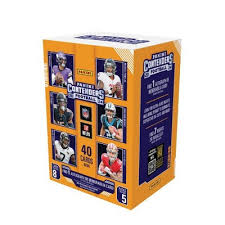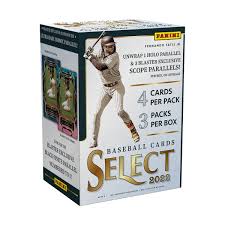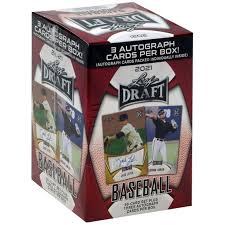

Like shoes, art, or any other form of collectible, the rarity of an object is directly tied to its value: the less that is in existence, the higher its potential value. To find out if you have a high-value card, masquerading as a base one, you should know how to Identify a Short Print (SP).
In sports cards, rarity is usually expressed in two ways: parallels and SPs.
To understand an SP, you need to first understand what a parallel is.
Thankfully, parallels are very straightforward: they are colored variations of the base card. In holofoil cards, they look like the common base version of the card, except they have colored borders. There are various colors of parallels, and some are rarer than others. Often they are numbered.
Here is a picture of a Donte Divincenzo Red White Blue Prizm Parallel next to the base Prizm of the same card:

For today’s post, we’re focusing on short prints or SPs. While there are some similarities, these are different than parallels and less understood.
Find Prizm parallel cards on eBay
If you run through an eBay search, you’ll find a lot of people using the terms SP, variation, and parallel incorrectly (or, perhaps, just gaming the search algorithm).
The confusion between the SP and parallel is understandable: both are rare, collectors seek both out, and both play on the base card.
The easiest way to remember the difference is this:
While parallel’s are an alteration of the same photo of the player (such as changing the border’s color), a short print has a different image.
For example, check out these images of a Fernando Tatis Jr. base card (provided by Topps):

Meanwhile, this is a short print version:

As the name suggests, a short print is a card that is limited in print compared to the base cards.
This history of the SP dates back to the early days of cards when companies printed cards on sheets with a number of cards per sheet that did not evenly divide by the total count of the set. Effectively, this means that companies printed more of some cards than others.
Here’s a real-world example: back when Bowman printed its 1948 baseball set, it did so on 42 card sheets. The set, however, had 48 cards. Because the numbers didn’t line up, the decision was made to short print 12 cards by switching out the six extra cards out halfway through printing. As a result, Bowman printed 36 of the cards twice as often as the final 12.
While the printing process has modernized, short prints have stuck around but evolved. Now, card companies print all the base cards in the same run, and then there are extra cards with different photos of certain players inserted from a smaller print run.
While short prints are a lot of fun to chase and a great way to add value to a collection, they also can be tricky to identify.
If you’re opening a pack of cards and they all look the same, design-wise, you can easily flip through a short print without realizing it unless you’re lucky enough to have the non-photo variation in the same pack.
I’ve benefited from this in the past: in 2013, I picked up a Topps Andrew Luck “Rabbit Foot” SP on eBay (Buy It Now) for about 3% of its market value. I flipped it almost immediately.
Unfortunately for collectors, this mistake happens more often than you’d think with short prints, so you need to safeguard against being that seller.
Here are a few steps you can use to make sure you don’t miss an SP:

Donruss uses their old logo for short prints.
This means with some of these sets, the front of the cards might be different, but you can pick out the short prints by simply turning the card over.
SPs can add value and variety to a collection, and they can also build unique sets. In many ways, pulling an SP can be like pulling a bonus hit in your box.
There’s another level of rarity, called super-short prints (SSPs), that are some of the premier cards for collecting, but the extra rarity demands an extra-high price tag. Examples of SSPs are the popular Kaboom or Downtown inserts from Panini Basketball and Football.
The downside of SSPs (and SPs) is that the card companies are pretty tight-lipped about how many they print. We know the print run is less, but it’s hard to know precisely how many exist. With numbered parallels, it’s easy to see exactly how many of the cards there are, but with SSPs and SP’s we don’t have that luxury.
However, there are some ways to get a general idea of how many SSP’s and SP’s exist:
If you’re trying to determine the scarcity of your SP, do some research about the particular set or brand because it varies between them, and check eBay’s recent sales to see how many dealers have sold your SP. The less, the better!
Now that you know how to spot an SP and find extra value in your hidden “base cards,” go on an SP hunt and see what you turn up.
Good luck and happy collecting!
Ripping the new Topps All Star Game mega box.
Is this new sports card store the BEST VALUE around?
I Tested eBay Auction Promotions So You Don’t Have To!
I deep-dove on Fanatics Collect so you don't have to (but should you?)
Panini is launching a WNBA Product at $30,000!?
Topps Chrome 2024-25 Basketball: Honest Review and Notes
Did you know this SECRET about PSA slabs? #sportscard #tcg
5 EASY tips to make more money on eBay sports cards.






2022 Topps Heritage Baseball Blaster Box Configuration: 7 Packs per Box – 9 Cards per Box. Plus 1 extra pack.










Keep up on breaking Sports Card News, our latest articles, product specials and exclusive content with expert analysis of hobby trends.

© Copyright 2025 - All rights reserved Cardlines.com / Media Techs LLC - Sports Card News, Reviews, Releases and BREAKS - #thehobby.
Important: When you click on links to various merchants on this site and make a purchase, this can result in this site earning a commission. Affiliate programs and affiliations include, but are not limited to, the eBay Partner Network.
2025 Topps All Star Game Mega Box Product Review
Cardlines 23 hours ago